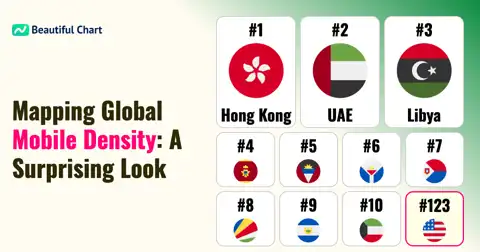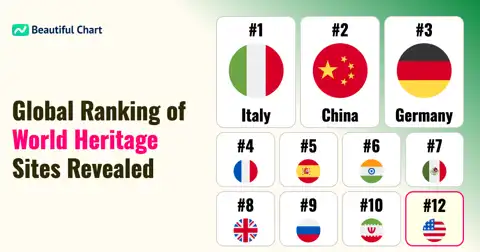The chart highlights the ranking of countries based on their stock market capitalization. The United States leads the list with a massive $54 trillion, followed by China at $12 trillion and the United Kingdom at $10 trillion. The data reflects the distribution of financial market size among global economies, emphasizing their relative influence in the global stock market.
Stock market capitalization, often abbreviated as market cap, refers to the total market value of a country's publicly traded companies. It is calculated by multiplying the share price of a company by the total number of its outstanding shares.
Stock market capitalization, or market cap, is a crucial indicator of the size and economic strength of a country's financial markets. This metric measures the total value of a country's publicly traded companies.
The United States, holding the top rank, demonstrates its dominant position with a stock market capitalization of $54 trillion, representing a significant percentage of its GDP. China follows with $12 trillion, showcasing its rapid financial and economic growth despite its transitional economy status. The United Kingdom secures third place at $10 trillion, indicating the strength of its well-established financial sector.
Japan and India occupy the 4th and 5th positions, reflecting their prominence in the Asia-Pacific region's financial markets. Meanwhile, Hong Kong's capitalization is particularly notable due to its high ratio relative to GDP, signaling its role as a global financial hub. Other significant entries include Canada, France, and Saudi Arabia, each contributing uniquely to the global financial ecosystem.
This data not only represents the absolute size of financial markets but also offers insights into economic trends, market growth potential, and the financial strategies of these nations. Emerging economies like India and Indonesia are particularly noteworthy as they steadily climb the rankings, underscoring a shift towards more diversified global financial power. This shift has implications for investors, policymakers, and economists alike, as it influences global capital flows, investment priorities, and economic strategies.
| Rank | Name | Indicator | Subindicator |
|---|---|---|---|
1 | 54T | 194.5% of GDP | |
2 | 12T 9B | 65.1% of GDP | |
3 | 10T 243B | 360.2% of GDP | |
4 | 6T 245B | 146.2% of GDP | |
5 | 5T 663B | 140.1% of GDP | |
6 | 4T 746B | 1262.6% of GDP | |
7 | 3T 463B | 160.7% of GDP | |
8 | 3T 459B | 84.9% of GDP | |
9 | 2T 694B | 347.0% of GDP | |
10 | 2T 182B | 60.0% of GDP | |
11 | 2T 42B | 297.1% of GDP | |
12 | 1T 723B | 129.3% of GDP | |
13 | 1T 705B | 132.3% of GDP | |
14 | 1T 684B | 94.5% of GDP | |
15 | 1T 640B | 267.6% of GDP | |
16 | 1T 334B | 82.2% of GDP | |
17 | 1T 230B | 348.3% of GDP | |
18 | 1T 9B | 162.0% of GDP | |
19 | 873B | 172.3% of GDP | |
20 | 863B | 68.4% of GDP |





